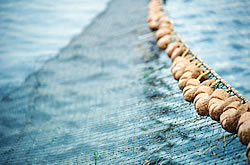Creating products from fish waste
The fishing industry is one of Europe's oldest and most important industries. From the North Sea to the Mediterranean, European fishing interests look to derive the greatest benefit from its seas. At the same time, sustainable fishing practices must be safeguarded. Approximately half of the fish caught today make it to the dinner table. The remainder is either disposed of or converted into low-grade animal feed. Yet, fish have long been known to contain several healthy substances, such as Omega 3 fatty acids. The goal of the HYDROFISH project, supported by the European Commission, was to devise new methods to process fish waste to produce useful biological materials. A variety of techniques were tested. Hydrolysis, the chemical reaction of a compound with water, proved effective in the presence of different types of enzymes. The variability of fish captured in the open sea results in a corresponding variability in the fish waste. It was determined that such fish waste is appropriate only for the production of small peptides and individual amino acids. This is useful for the creation of flavour enhancers, feeding stimulants, dietary supplements and cell culture media. On the contrary, fish waste from aquaculture (farmed fish) is more homogeneous. It can be exploited to produce larger peptides such as immuno-stimulants, enzyme inhibitors and peptide hormones. For example, animal feed can be fortified with peptide immuno-stimulants rather than supplemented with antibiotics. This will result in healthy livestock and reduced contaminant levels in the food chain. It is worth noting that all the techniques developed through HYDROFISH take advantage of existing technology. Therefore, no heavy investments in new equipment are necessary for the implementation of the new methods. This work is the first of its kind in this field. It espouses the current slogan of sustainable development: reduce, reuse and recycle. The next step, moving forward to commercial exploitation, is being actively pursued.







